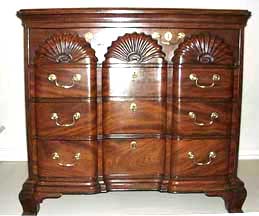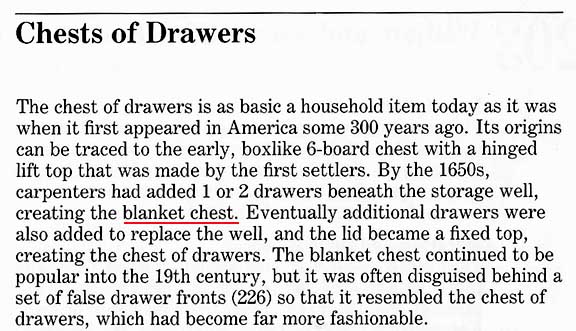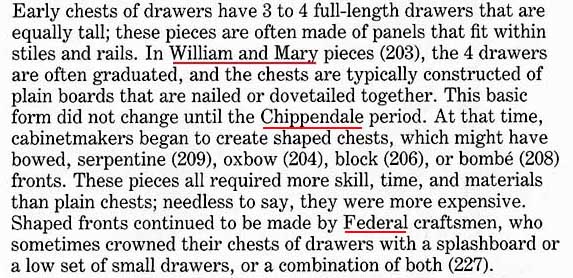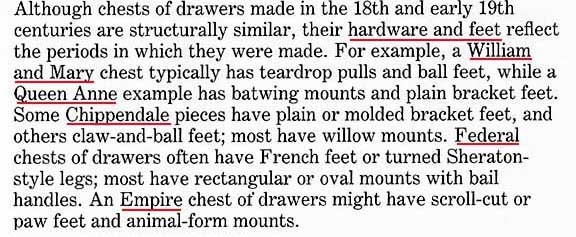Illustrated FURNITURE Glossary
Chest
![]()
Illustrated FURNITURE Glossary
Chest

|
Excerpt from A chest is defined as a large box of wood or metal with a hinged lid. Next to the chair
and the bed, chests are said to be the earliest articles of domestic
furniture. They were the receptacles for clothes and valuables, and
were also used as a seating place, a chair being somewhat of a luxury
in days when the chest was an almost universal possession. Chests were
frequently made to contain the store of linen which a bride took to her
husband upon her marriage. Perhaps no other articles of furniture were
brought from England by the early settlers in such numbers as the "ship
chests", being the indispensable pieces in which to transport clothing
and valuables; containing these articles the chests took but little
more of the limited space of the small ships of the period than did the
articles themselves. The principal feature of chests is the decoration of the panels on the fronts, and also on the "stiles", which are the four vertical posts at the corners of the chest and which, when prolonged several inches below the body of the chest, form the feet. The dates of the making of these chests are rather indefinite, ranging from about 1650 to about 1750; the style of the decoration is said to be the least uncertain test. The English pieces were generally made of English oak throughout; some of the American pieces were also made altogether of oak, but the bottom, the back and the top were often made of pine. The height of the
chests without drawers was usually about thirty inches, and the length
about four or five feet. The addition of drawers, of course, increased
the height, but in order to keep down the bulk the length was reduced
somewhat. Boxes |
| Excerpt from William C. Ketchum, Jr., American Furniture: Chests, Cupboards, Desks & Other Pieces. Black Dog & Leventhal Publishers, 2000      |
Chests of drawers
Evolved from the chests in which clothes and linen were stored before about 1650.Shortly after the Restoration (1660) the first chest of drawers appeared and were usually fitted with three long drawers and two small ones at the top. The drawer fronts should be graduated in depth with the largest one at the bottom and the smallest at the top, with about one inch in difference in each case.
Serpentine and bow fronts were introduced about 1750.
See also: block front ..... Bombé
Chest-on-chest
Examples in Buffalo:
- Illustration above: John Townsend block-front chest of drawers - DeWitt Wallace Decorative Arts Museum, Williamsburg, Va
- American Sheraton chest of drawers - Dana Tillou Fine Arts
- Reproduction chinoiserie bombé chest of drawers - Kittinger Furniture Company
- Reproduction Federal style serpentine chest of drawers - Kittinger Furniture Company
- American Victorian chest of drawers - Boies-Lord House (Hamburg)
- American Late Classical (pillar and scroll / Empire) chest of drawers - Boies-Lord House (Hamburg)
- George III chest of drawers - Private collection, Orchard Park, NY
Examples out of Buffalo:
- American Victorian chest of drawers - McCann House
- 2 Jacobean chests - Reprinted from Edgar G. Miller, Jr., American Antique Furniture, 1937, Vols. 1 & 2
- 16h Century Italian Renaissance cassone - Memorial Art Gallery of the University of Rochester
- 16h Century Spanish caixa - Catalonian National Art Museum
